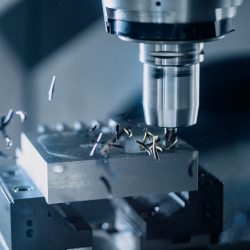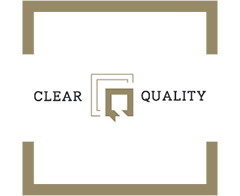3D Machining Capabilities at Oracle Precision
April 2022Oracle Precision are proud to offer such a wide range of capabilities for multiple sectors in the manufacturing industry. We only manufacture the highest quality of parts and use the best machines & experienced staff which enable us to do so.
One of our capabilities that helps to simplify the manufacturing process of complex components and keep the costs down for our customers, is 3D machining.
What is 3D Machining?
CNC 3D machining is where a block of chosen material is used, to begin with. Then, three axes cut different depths and shapes to form a desired component. 3D machining can also be known as 3D milling. These machines are computerised and require little human involvement, also making them faster than other machinery capabilities and more accurate.
How Does 3D Machining Work?
First, we require the client to have a model of the component that they need, which is known as a 3D CAD Model. A 3D CAD Model is computer-aided design software which enables realistic models of components to be created on the computer, essentially a virtual prototype of what will be created using the 3D CNC machine.
Next, the CAD 3D model will go through a verification process in which it will validify that a CAD file matches the native model. In this process, measurements such as the surface area and volume are checked over as well as revision checks.
After this, direct program transfer via DNC (direct numerical control) is carried out which sends commands to the 3D machining machine without requiring much human intervention. The component manufacturing begins and after it has finished, it is inspected.
3D Machining V 3D Printing?
3D machining and 3D printing could be interpreted to be the same or similar, but their processes and approaches are different. 3D CNC machining starts with a block of material and the three axes will cut different depths to remove material to get the final component that has been programmed.
3D printing is known as additive manufacturing. Additive manufacturing builds components by adding materials one single layer at a time and this requires no specialist tools that the CNC 3D machining requires.
3D milling, or machining, offers more accuracy and produces better quality parts.
3D vs 2D CNC Machining?
2D CNC machining involved 2 axes that will remove a shape that is uniform throughout the material. Everything here is the same depth which, in comparison to 3D offers a simpler finished design if that is what is needed and at a lower cost. 3D cuts different depths and shapes which is better for more complex components.
Summary
Our 2D and 3D CNC machining capabilities offer flexible options for components to be manufactured whilst keeping the overall costs down. Our machinery means that work times are decreased, the need for human intervention is kept to a minimum and the accuracy of machined components is high. Get in touch today to discuss your CNC machining needs.


